"Dinosaurs come to the Kyoto aquarium" which can compare the fossils of all 24 species such as skeletal specimens of large dinosaurs with the creatures of the aquarium!

Triceratops skull about 2 m and whole body skeleton specimen of large dinosaur of about 5 m in length,Fukui Prefectural Dinosaur MuseumBy exhibiting fossils of collection creatures in comparison with waterside creatures such as penguins and giant salamanders, it is the Kyoto aquarium's "Kyoto Aquarium" that you can imagine the life forms of creatures that you can not see anymore"Dinosaurs" will come to the Kyoto Aquarium!"is. Prior to the release on Saturday, July 19th, a preliminary press release was held, so I've seen what it is like.
Fukui Prefectural Dinosaur Museum × Kyoto Aquarium 7/19 ~ Event Holding | Kyoto Aquarium
http://www.kyoto-aquarium.com/news/2014/06/kyoryu2014.html
Arrived at the Kyoto Aquarium.
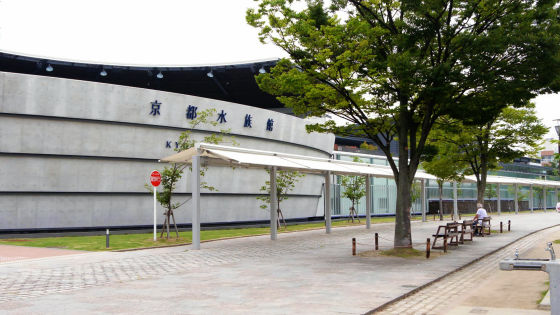
When heading to the entrance ......
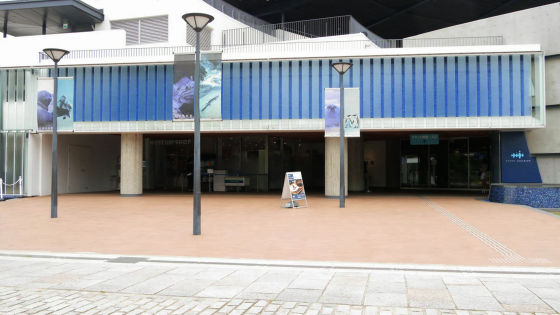
Dr. Dinosaur of the Fukui prefectural dinosaur museum was sitting on the bench.
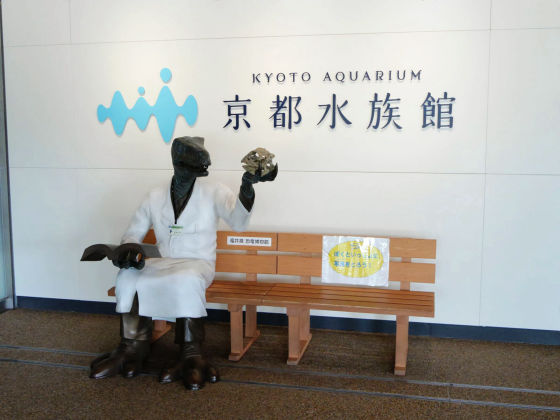
Skull in hand.
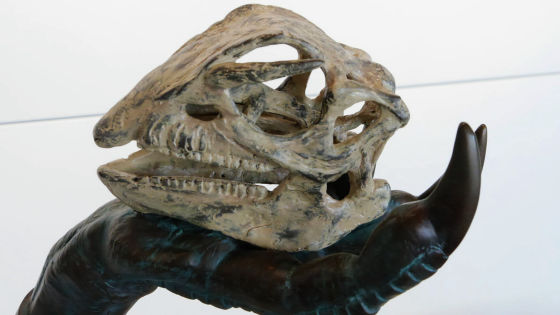
That is why we will go into the hall while being sent off by Dr. Dinosaur.
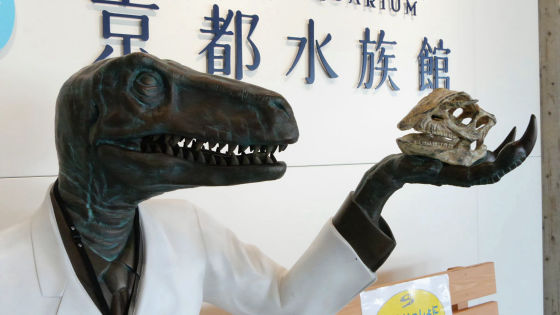
When entering the hall, there is a signboard of the preceding press release, behind which ...
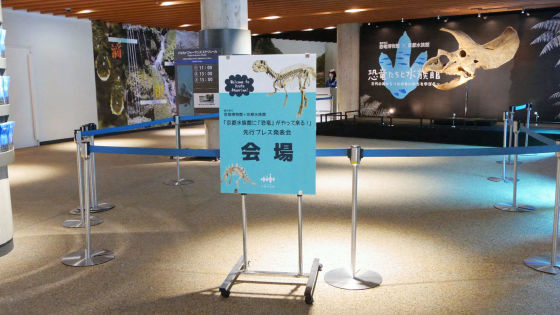
There was a duplicate of the skull of Triceratops · Holidas which existed in the late Cretaceous.
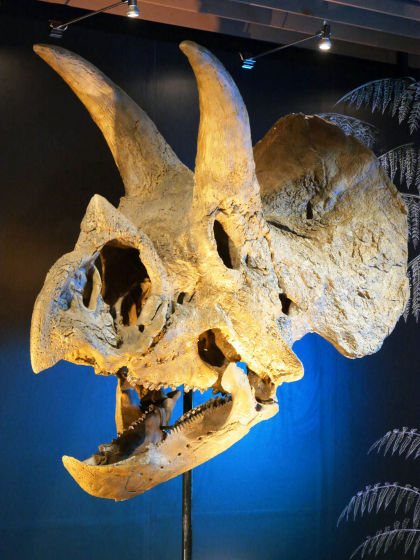
This is a copy of Triceratops found in America. Because it is a vegetable diet, teeth are small.

There are 2 meters just by the skull, and it is thought that the total length is about 12 m.
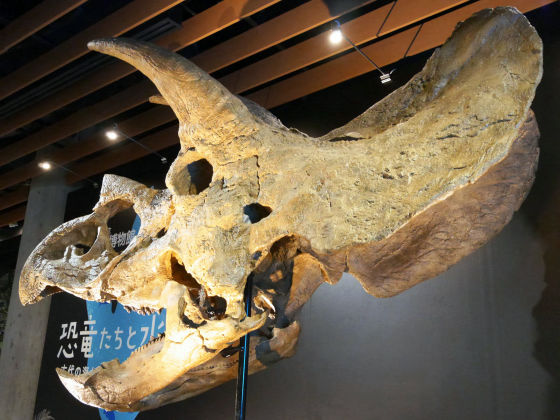
So the tour started.

"Dinosaurs come to Kyoto aquarium!" Is divided into five exhibition zones in all. In the river zone of Kyoto, the oldest amphibian Ichthostega reproduction and the real sample of Champsosaurus were displayed.
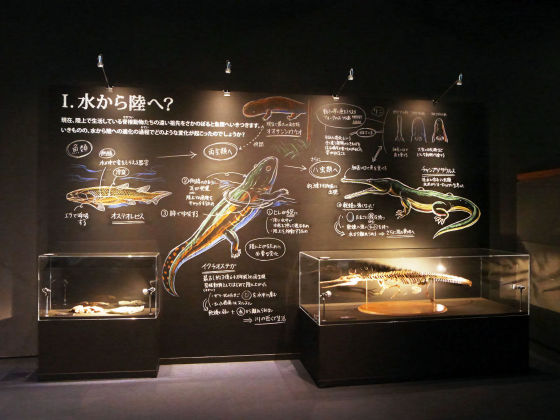
A replicating specimen of ichthyostega that first landed as a vertebrate. In the late Devonian,GreenlandIt was discovered in.
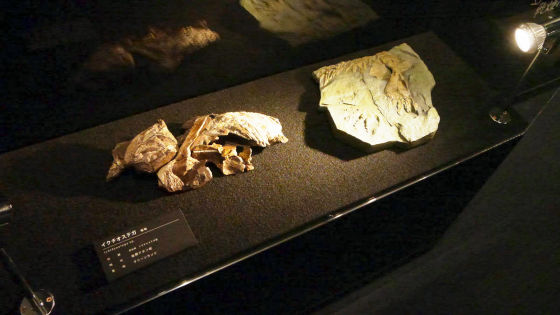
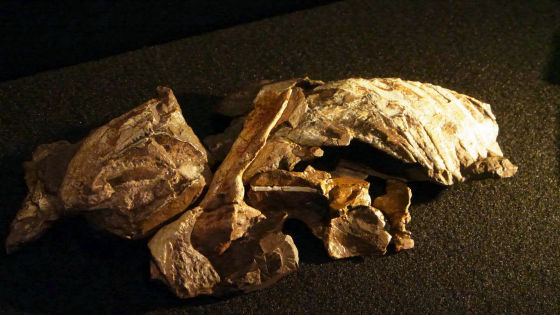
Feet like this.

And, next to the specimen exhibition, the largest existing amphibian alchemist Salamanderidae is displayed, and by comparison with the bone of Ikutioostega it is possible to imagine the appearance of Ikutioostega at that time.
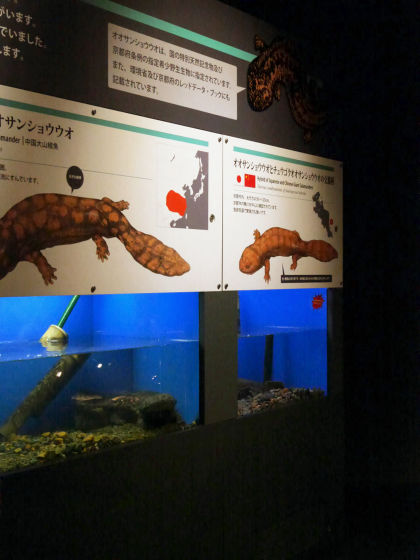
Illustrations are also drawn on the skeletal specimens, so what kind of creatures they were able to understand very well.
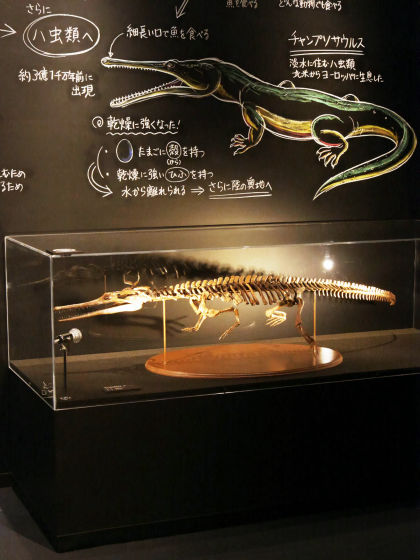
Champsoosaurus, which existed in the late Cretaceous, has evolved ichthyostega into a reptile.
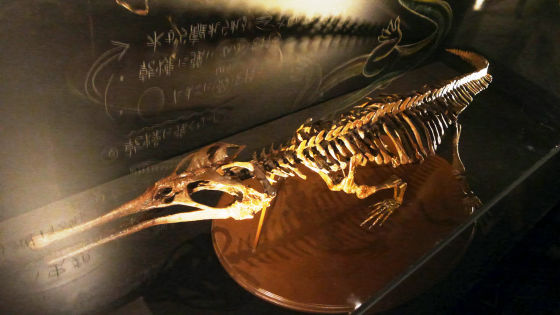
I have legs because I live on land.
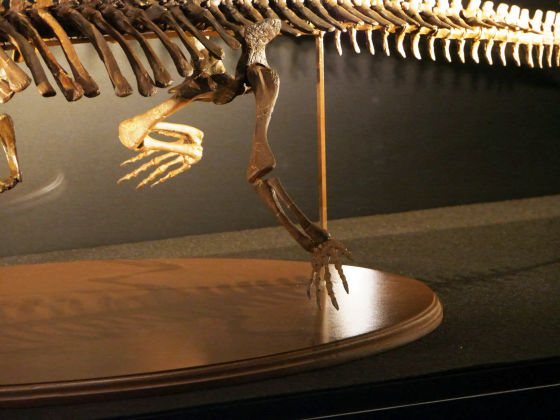
Next is the exhibition of the penguin zone on the 1st floor. Penguins are birds but you can see it compared to the primitive birds of the dinosaur era like Ikki Tornis and fossils of penguins and penguins swimming in the skeletal specimens of Hesperornis which is said to have dives in the sea and eaten the fish like the penguins I can do it.
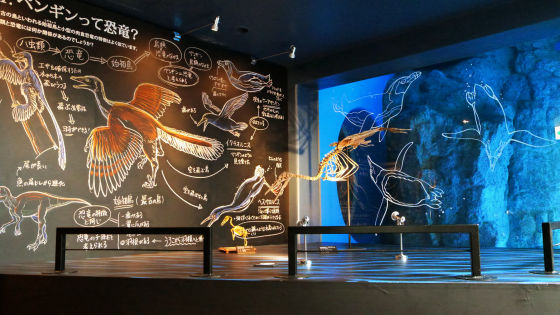
Above is Archeoptery and the lower is penguin fossil.
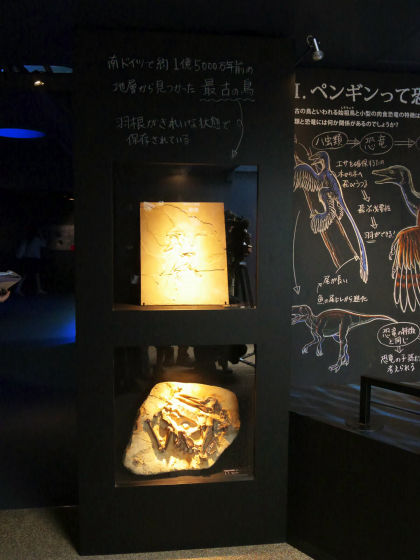
Berlin specimen reproduction of Archeoptery is like this. The feathers are kept in a clean state.
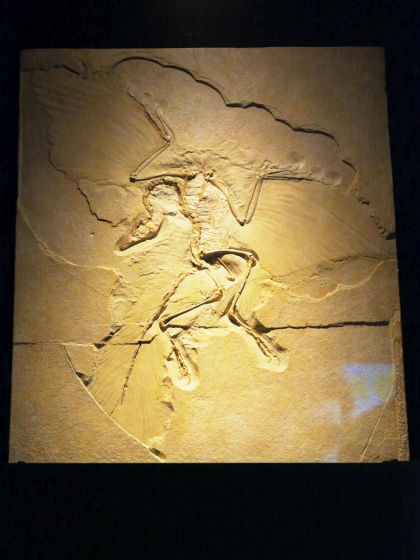
And this is a penguin fossil. It is the real thing.
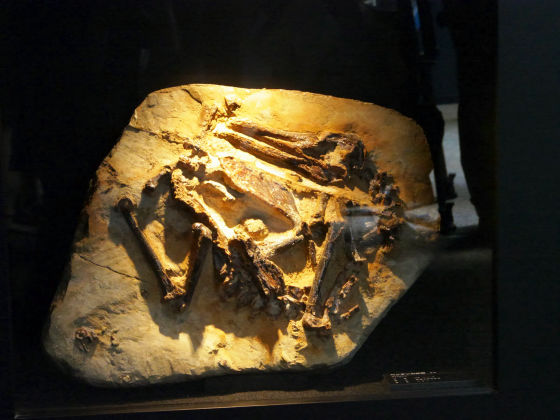
This is a 3D skeletal specimen of Hesperornis.
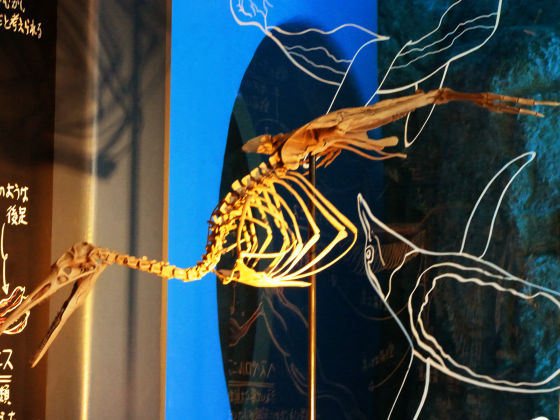
3D specimen of Ichthiolnice.

Penguins are swimming in a pleasant way next to the specimen.
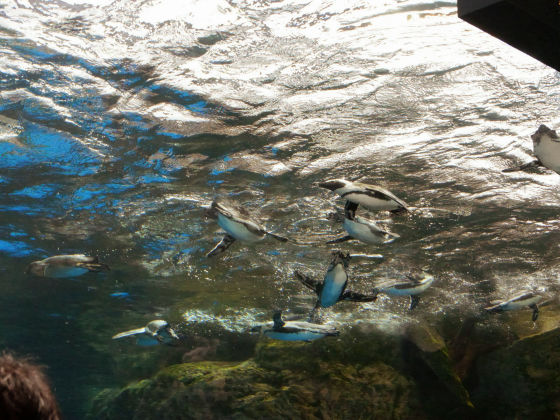
The visited children were excited looking at penguins and fossils.
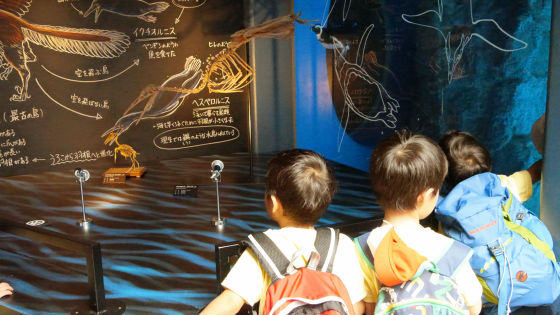
The third exhibition zone is in front of the first floor large aquarium.
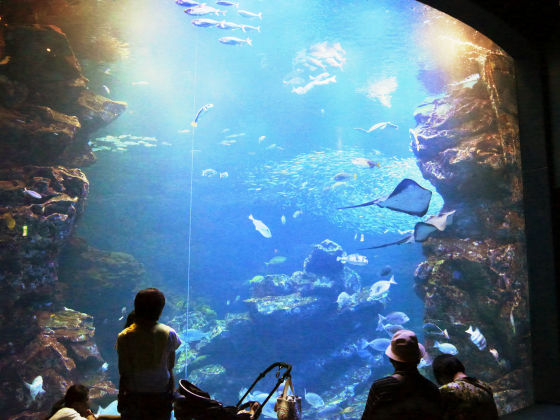
When turning around from the large tank, there are exhibits such as fossils of teleost fishes.

The fossils of teleost fish living in the dinosaur days such as Claddy Cruz and Fels are displayed in the space where the current fish swim.

There was also a duplication of Tsubasa, Ranfosefars.
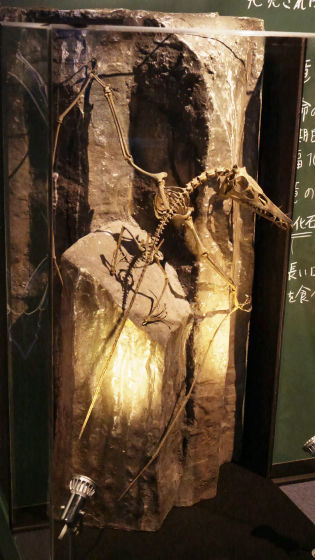
This Raphoca Fals was discovered from the Jurassic strata in the UK.
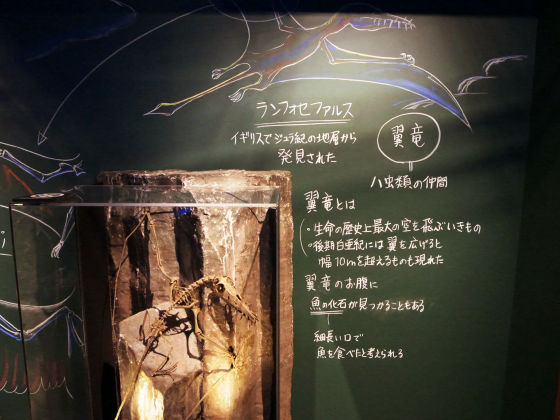
Birds and dragons are similar but different things.
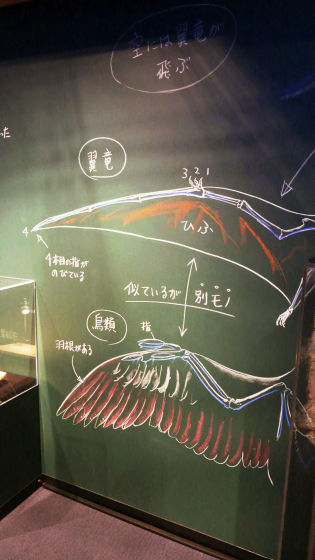
Looking up, it is such a face.
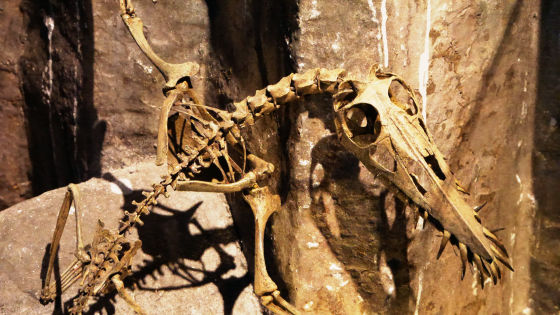
Illustrator was drawing a picture with chalk on a blackboard as it is currently being prepared for the release on the 19th.

On the first floor large aquarium exit, the large dinosaur and the ancient fish which ate the fish.

This is an aquarium of ancient fish "Polypters".
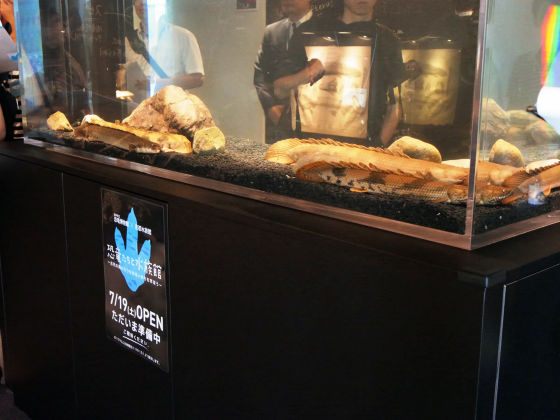
Polyptus was discovered by Napoleon army officer Etienne Geoffroy Saint-Hilaire, and Polypters who swims like crawling on the bottom of the water was considered a very important fish to support the evolution of the amphibians from fish.
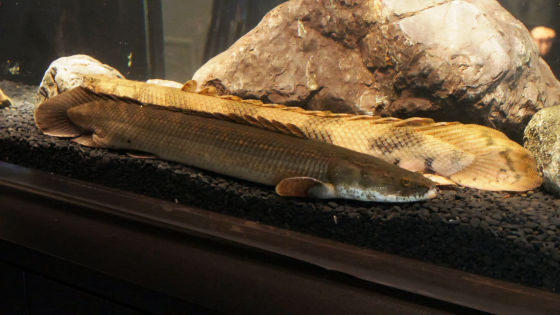
In addition, Spinoosaurus' s torso was also exhibited.
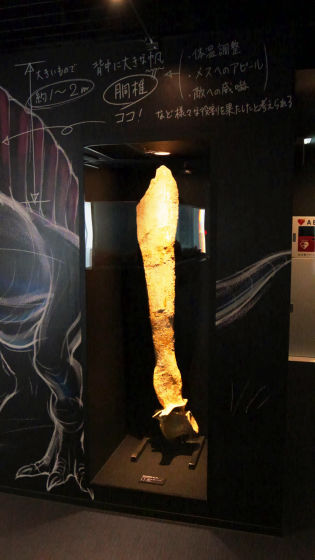
Spinosaurus, which had a total length of 13 to 14 meters, is thought to have captured fish with sharp teeth like a crocodile with a slender mouth.

The fifth exhibition zone is an ocean zone exit. Fossils of real ammonites are on display.
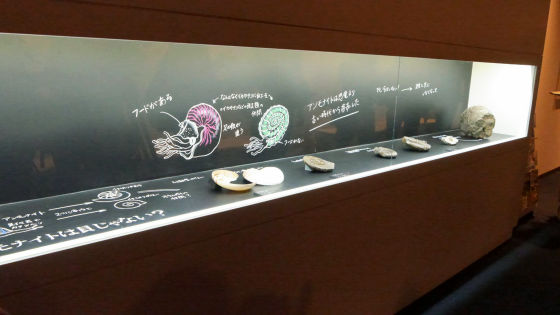
Ammonite is shellfish, but it is not a shellfish but a member of cephalopods such as squid and octopus.
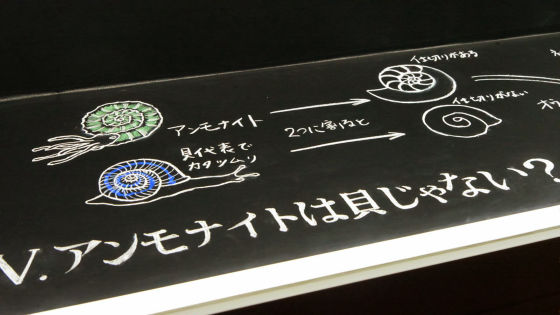
This is a still-existed parrot. Parrot is also thought to be a member of ammonite, but it is distinguished from shellfish such as snails with a partition inside.
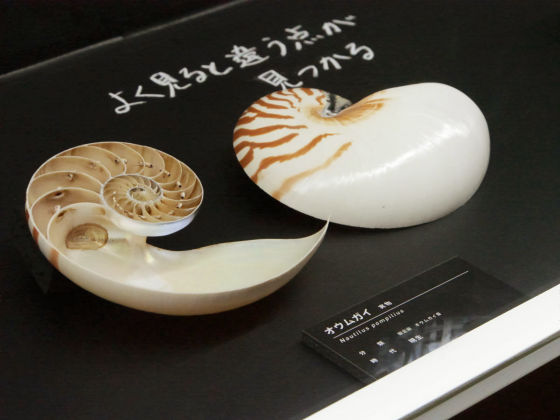
Puzocia which existed in the late Cretaceous also has a partition inside the shell.
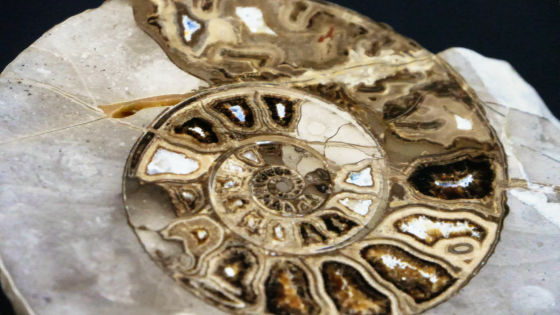
Other fossils of ammonite. How is it different from the Nautilus? You can observe that thoroughly.

As I go on and on and on, it looks like something.
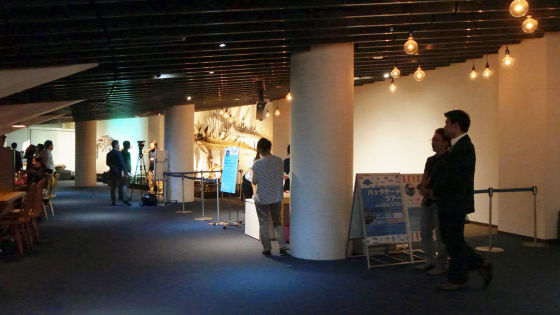
The sandpit of the new sense "kinetic sand" is set up in the interchange plaza. It is the largest domestic in Japan with a size of 7 m × 2.5 m.

The kinetic sand is made of 98% sand and 2% secret, and as soon as it grips tightly it solidifies and becomes a shape ... ...
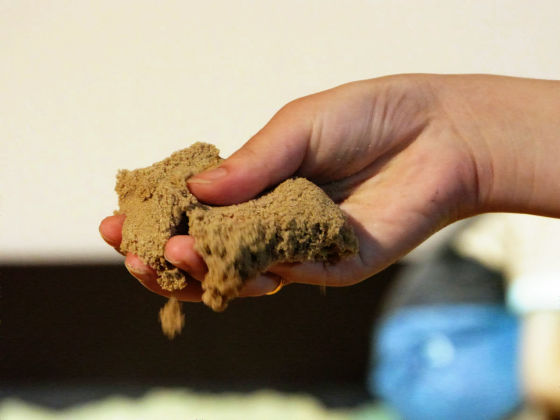
It will not get dirty, it will fit perfectly for indoor play as it will fall off as soon as you relax your power without loosing your hands.
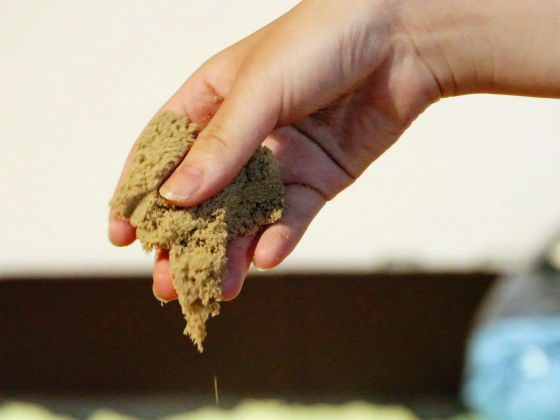
Living things are made in the sandbox ... ...
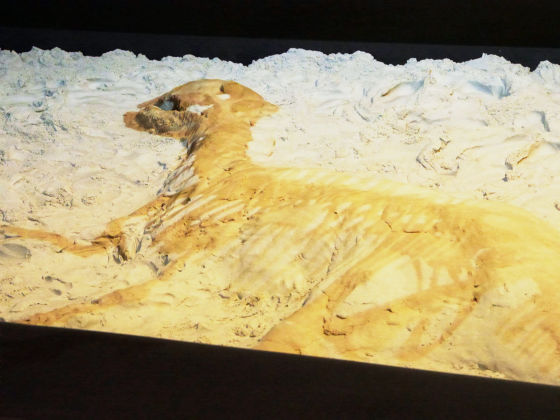
Bones are projected with the projector.
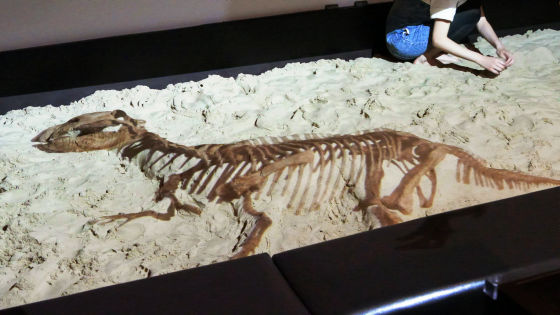
And on the dinosaur plaza next to the sandbox, a whole body skeletal specimen of a large dinosaur is exhibited. This is Tuojangosaurus multispinus, the total length is about 5 m.
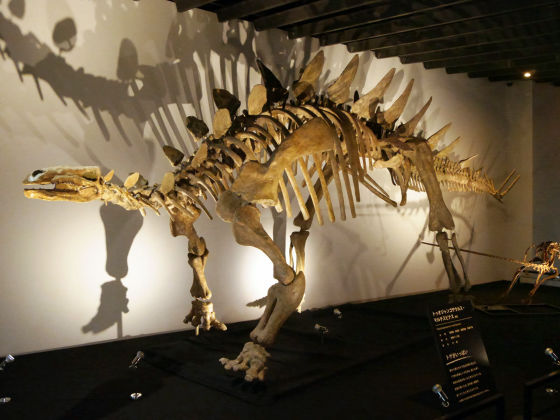
Looking from the front like this.
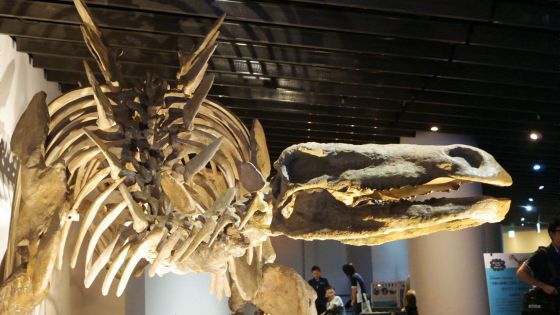
My body and head are big, but my teeth are small because it is a vegetable food.
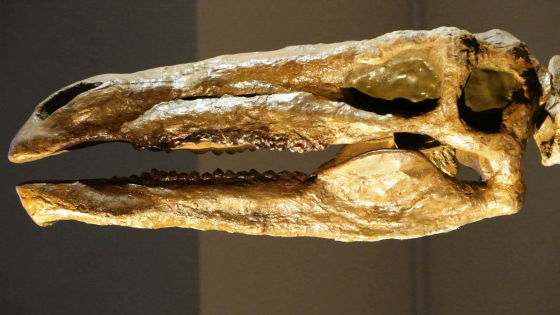
Thorghood on the back. "Multispinas" means "many thorns".
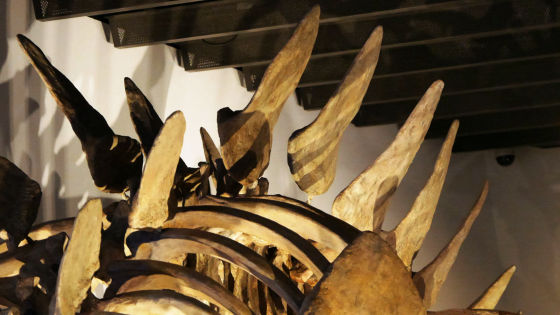
It is believed that because the forelimbs are short, they were eating plants in low places.
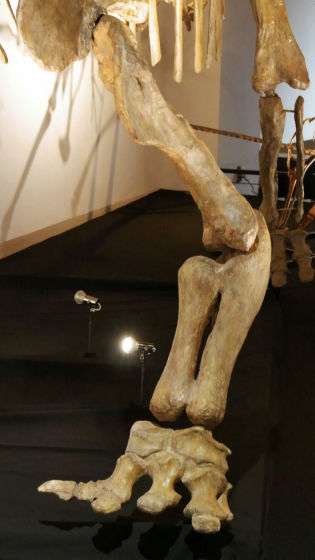
A big shadow was reflected behind the light up.
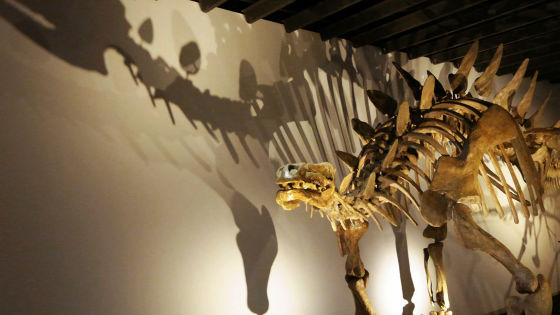
Stegosaurus big bone is also exhibited.
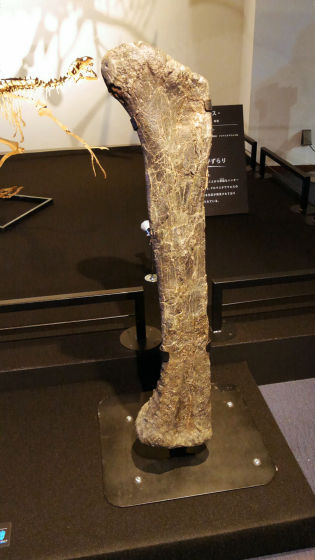
This is OK even if you touch it.
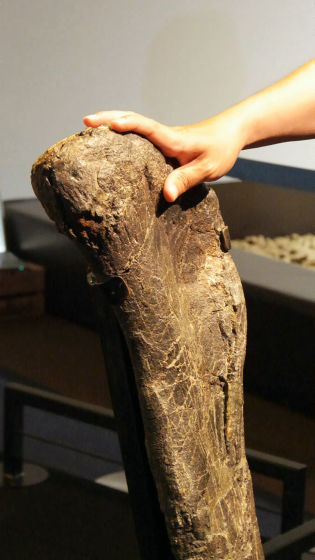
In front of Tuojangosaurus multispinus there is a slightly smaller copy of Doloma Eosaurus Al Bartensis displayed.
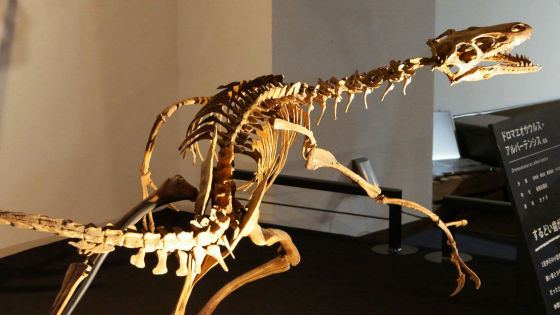
It is much smaller than Tuojangosaurus, but it has sharp and somewhat big teeth.
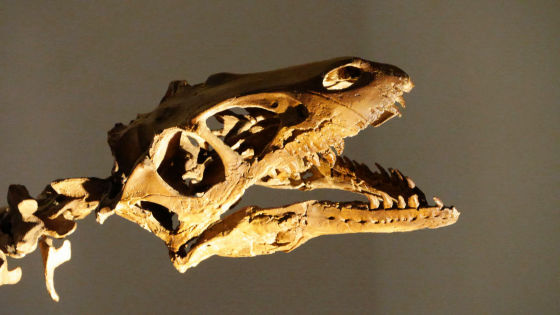
Fossils with preserved feathers have been discovered and are thought to be closely related to birds. Featuring long forelimbs like feathers.
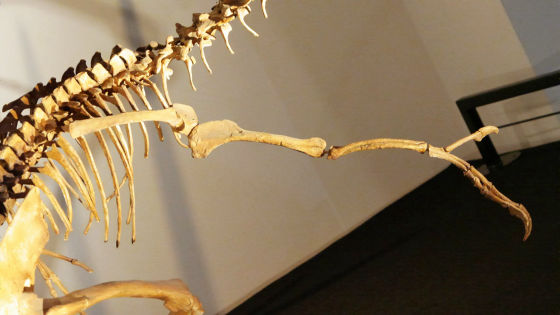
And Fukui Saulus · Tetrienesis replication.
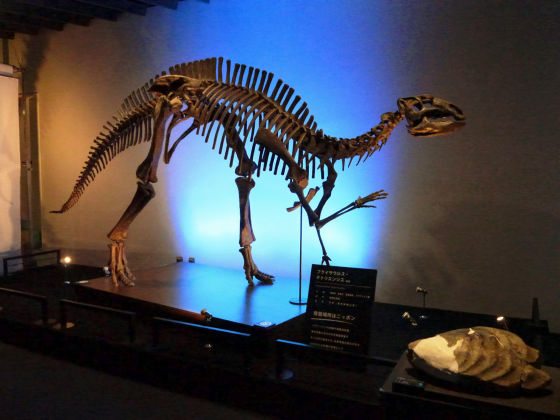
Looking at it from the front is like this.
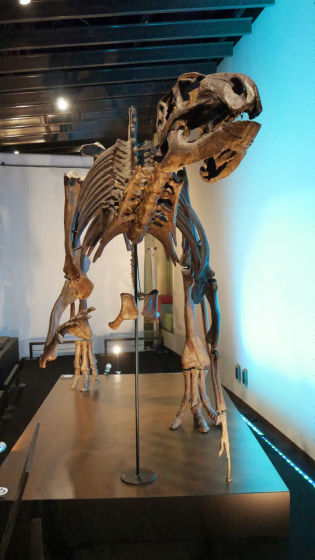
The origin of the name is "lizard of Fukui", it is the dinosaur whose whole body skeleton was restored in Japan found in Fukui Prefecture for the first time.
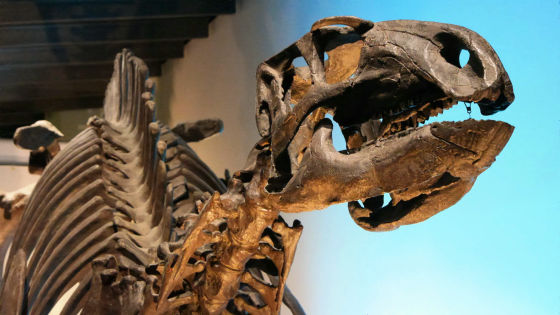
Also from 19th as a summer new menu, "Drink with Souvenir Madler (tax included 450 yen)" and "Dinosaur Pan (290 yen including tax)" with jellyfish and penguins at the end of the colorful muddler were also released I will.
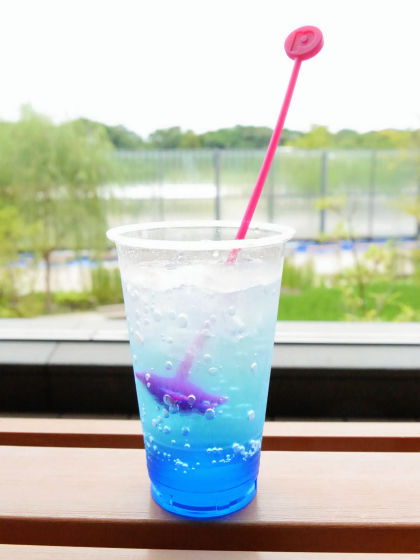
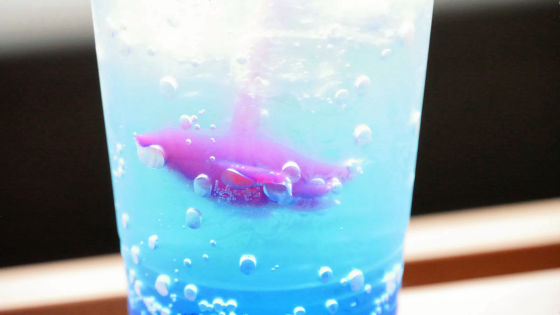
"Dinosaurs come to the Kyoto aquarium!" Not only can fossils and specimens be seen, but also next to the actual creatures, and by attaching commentary with an easy to understand illustration, the imagination of the viewer very much It was supposed to stir up. The exhibition is until September 24 (Wednesday).
Related Posts:
in Coverage, Posted by darkhorse_log







